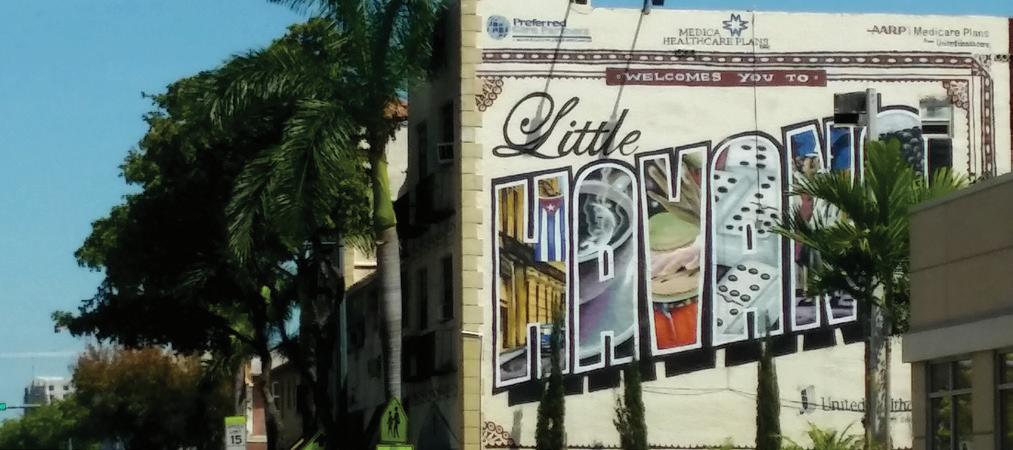
2 minute read
Immigration to Miami
Immigration to Miami by Rachel Ropella
a mural in tHe miami neigHBorHood oF litttle HaVana Florida is home to many iconic landmarks and attractions, but one city truly stands out: Miami, known for its Latin American cultural influences and as the hub for Cuban culture in the US. In Sweet Goats & Blueberry Señoritas, the Ramirez family immigrated to Miami during the Cuban Revolution, which was the case for many Cuban immigrants during the 1960s. In fact, between 1961 and 1970, over 290,000 Cubans arrived in the United States. A Cuban community had been established in Florida before this wave of immigration because of the economic and political connections between the Hispanic Caribbean and the US from sugar imports during the 19th century. However, it was not until the exodus of the Cuban exiles in 1959 and Operation Peter Pan (also known as Operación Pedro Pan) that Miami became the heart of the Cuban American community.
As the new Cuban government began to ally with the Soviet Union in 1959, an exodus began, causing tens of thousands of Cubans to leave their country. The vast majority of those first leaving were from Cuba's educated, landowning upper class as well as unaccompanied Cuban minors. In Sweet Goats & Blueberry Señoritas, Tío Eme recalls how his immigration journey began when he and his sister were put on a plane by their parents as part of the American program Peter Pan. Operation Peter Pan was a secret exodus led by the US State Department and the Catholic Charities of Miami as they helped over 14,000 children ages 4 to 18 travel unaccompanied to the United States from 1960 to 1962. Steve Velasquez, the associate curator of the Smithsonian’s National Museum of American History, notes, “Since there was no US embassy in Cuba after the revolution, the State Department partnered with the Catholic Church to grant special visa waivers for children to come safely to the US and eventually be reunited with their parents and family members.” Though many children were reunited with their families quickly, others went into foster care and struggled as they were encouraged to assimilate and learn English while wanting to maintain their cultural identity.
To provide aid to the immigrant families and children of Operation Peter Pan, Congress passed the Cuban Adjustment Act in 1966, helping those who had entered the US after 1959 become permanent residents. The Cuban Refugee Program also provided more than $1.3 billion of direct financial assistance, Medicare, free English courses, scholarships, and low-interest college loans. This support helped the Cuban community and the city of Miami as a whole to flourish with new businesses and a dynamic art scene that it is still known for today. In particular, the Miami neighborhood Little Havana is at the heart of the city’s Cuban community and hosts the annual Calle Ocho street festival, which started in 1978 as a way for Cuban immigrants to express themselves and educate South Floridians about their culture. The festival is now attended by over 1 million people each year.
While Calle Ocho and Little Havana thrive in Miami, the experience of Cuban immigrants can still be complicated and isolating. Now adults, many of those who were brought to Miami through Peter Pan talk about how their journey shaped their identity, and the complexity of identifying as both Cuban and American. It can especially be difficult for families that have been separated and









